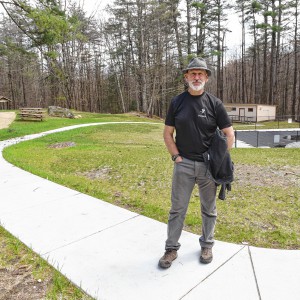Local administrators see progress in rural school aid, but more needed
| Published: 03-01-2023 5:28 PM |
After the Special Commission on Rural School Districts’ report called for a significant increase in rural school funding, Gov. Maura Healey’s budget proposal for fiscal year 2024 shows an initial step toward fulfilling that request.
The commission’s report, released in July 2022, recommended a $60 million bump to rural school aid — from $5.5 million in fiscal year 2023 — to offset increasing costs in the face of declining enrollment and lack of economic resources in more rural areas.
Healey’s recommended budget of $55.5 billion, which was formally unveiled on Wednesday but had been teased in the weeks before, provides $7.5 million in rural school aid, a $2 million or 36% increase from the previous year. The budget would also increase Chapter 70 state aid, regional school transportation and special education funding for all districts in the state, according to an overview compiled by the administration.
“I’m pleased that the Chapter 70 came in higher than we expected, so that will definitely help with our budget,” said Kristen Smidy, superintendent of the Huntington-based Gateway Regional School District. “Rural aid is still not fully funded as recommended. … It’s good, but it could be better.”
State Rep. Natalie Blais, D-Deerfield, who also co-chaired the Special Commission on Rural School Districts, said the increased funding is a great first step for funding rural school districts.
“This is a really promising start; there’s a $2 million increase for rural school aid, which is a welcome increase, but we’ll continue to fight for more,” Blais said. “Generally speaking, it feels like they read the report. The conversations we’ve been having with the administration about rural schools certainly didn’t fall on deaf ears.”
Athol-Royalston Regional School District Superintendent Matt Ehrenworth echoed Smidy’s thoughts, saying the governor’s proposed increases put the state “on the right track” toward funding rural schools.
“Gov. Healey has really committed herself to working with the schools and improving education, in particular with rural schools,” Ehrenworth said. “It’s a great start and we are appreciative of any support we can get. However, the rural aspect of things should become more of a multiplier factor for Chapter 70.”
Article continues after...
Yesterday's Most Read Articles
With this increased funding, Ehrenworth said his district will receive between $215,000 and $225,000 in rural aid this upcoming fiscal year, about a $40,000 increase from this year’s allocation. While it’s “not a game-changer,” he said that money can go toward community outreach and engagement with the public and nonprofits in the area, which can help bring in additional services the school may be unable to fund on its own.
“I feel that’s where a lot of districts are spending the money,” he said. “It’s so much more costly to bring resources into a rural district.”
Mohawk Trail and Hawlemont regional school districts Superintendent Sheryl Stanton said the assistance is appreciated, but she is hopeful more funding is allocated in future budget cycles.
“Support in rural aid is welcomed, but the rural commission report’s recommendation is for $60 million,” she said, “so we’re still a ways away from the recognized needs in our districts to provide equitable education.”
Stanton explained the smaller populations spread across larger regions in western Massachusetts make it difficult to take on increasing student costs. Regionalization is not always possible.
“It’s really a challenge because our geography doesn’t allow us to have the same efficiencies as a larger region; anything like a super regional high school doesn’t make sense,” Stanton said. “We know we are going to have smaller schools, but how are we going to make sure we have the same resources and our students have the same access to quality programming that the state requires us to have?”
Increased Chapter 70 funding, a nearly 10% bump in transportation reimbursements — for both regional and vocational schools — and more special education funding can take some of the burden off rural districts, according to both Stanton and Smidy.
“When transportation is $1 million of your budget, that 10% is a big thing,” Smidy said.
Healey’s budget proposal also marks a large increase for the Student Opportunity Act, a 2019 school finance reform law to be implemented over a seven-year period. However, Stanton said the law mostly provided support for urban districts — that do need the money — and didn’t make a huge impact on small districts like those in Franklin and Hampshire counties.
“I can’t thank the governor enough. We moved from $2 million to $4 million to now $7.5 million,” Stanton said of rural school aid. “But there needs to be the recognition that the Student Opportunity Act didn’t really make a significant difference for the majority of small, rural districts.”
Ehrenworth noted his district is in “both buckets” when it comes to rural school aid and the Student Opportunity Act because Athol and Royalston’s income levels meet the Student Opportunity Act’s funding formula, meaning it sees a financial bump other districts in the Pioneer Valley might not see.
Much like the Student Opportunity Act’s seven-year implementation plan, Blais said it may take several years for the commission’s rural aid suggestions to be incorporated into the state’s budget.
“The challenge, of course, is we recognize that’s what the report recommends,” Blais said of a $60 million boost to rural school funding. “We have to be cognizant of the fact that that’s a big delta to make up in a single year.”
While it’s a long process, Smidy said in the face of current events, such as the $3 billion tax refund issued last year, it can be discouraging to not see money coming back to education.
“The fact that the state has so much excess revenue right now,” Smidy said, “it’s frustrating fully funding rural schools isn’t on the table.”
Chris Larabee can be reached at clarabee@recorder.com or 413-930-4081.

 $427K to expand Camp Apex capacity in Shelburne
$427K to expand Camp Apex capacity in Shelburne With eye toward teaching firearm safety, Mahar’s Junior ROTC adding air rifles
With eye toward teaching firearm safety, Mahar’s Junior ROTC adding air rifles Franklin County Fairgrounds hosting regional dog agility competition
Franklin County Fairgrounds hosting regional dog agility competition Franklin County Technical School Honor Roll, Semester 1
Franklin County Technical School Honor Roll, Semester 1
